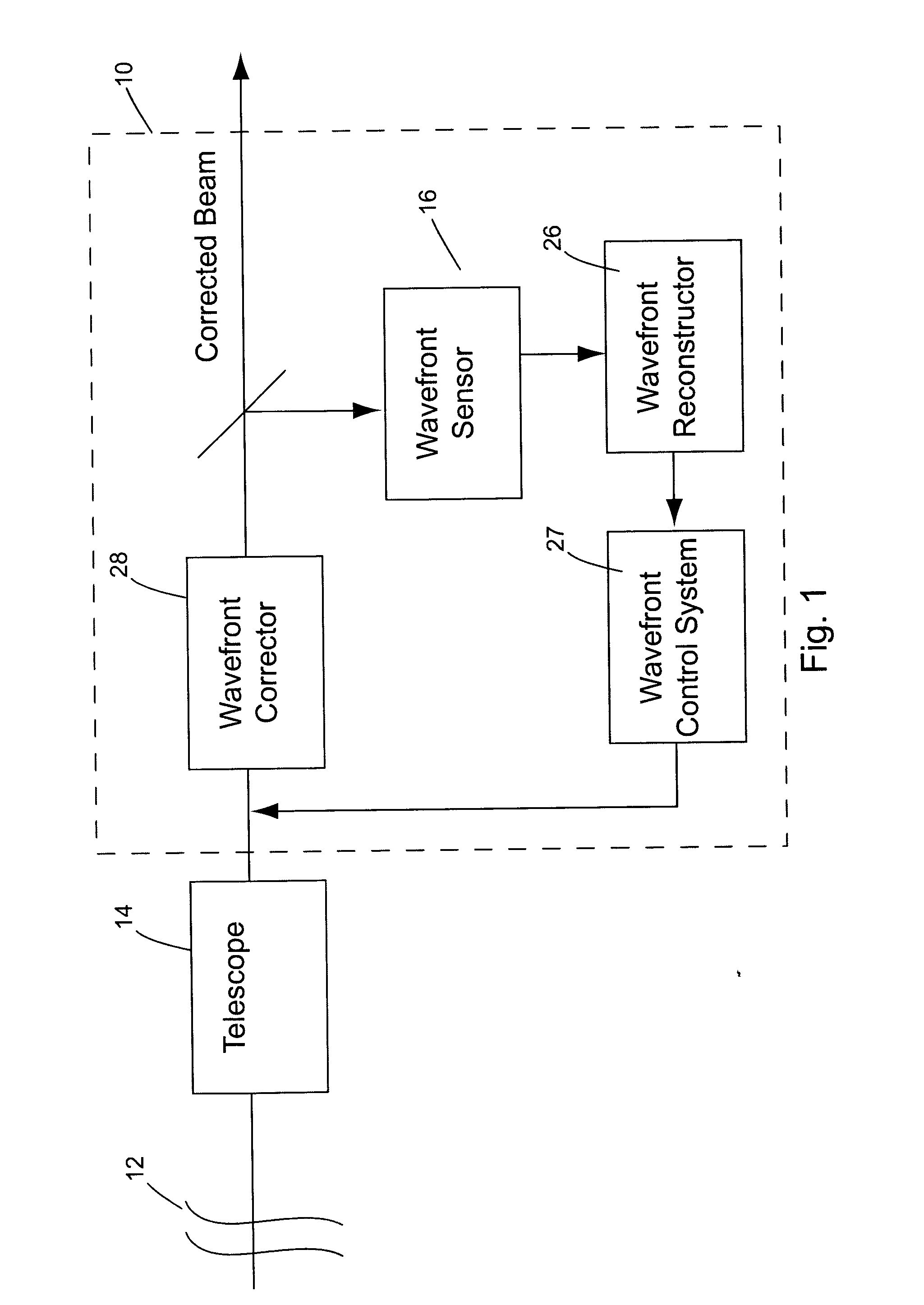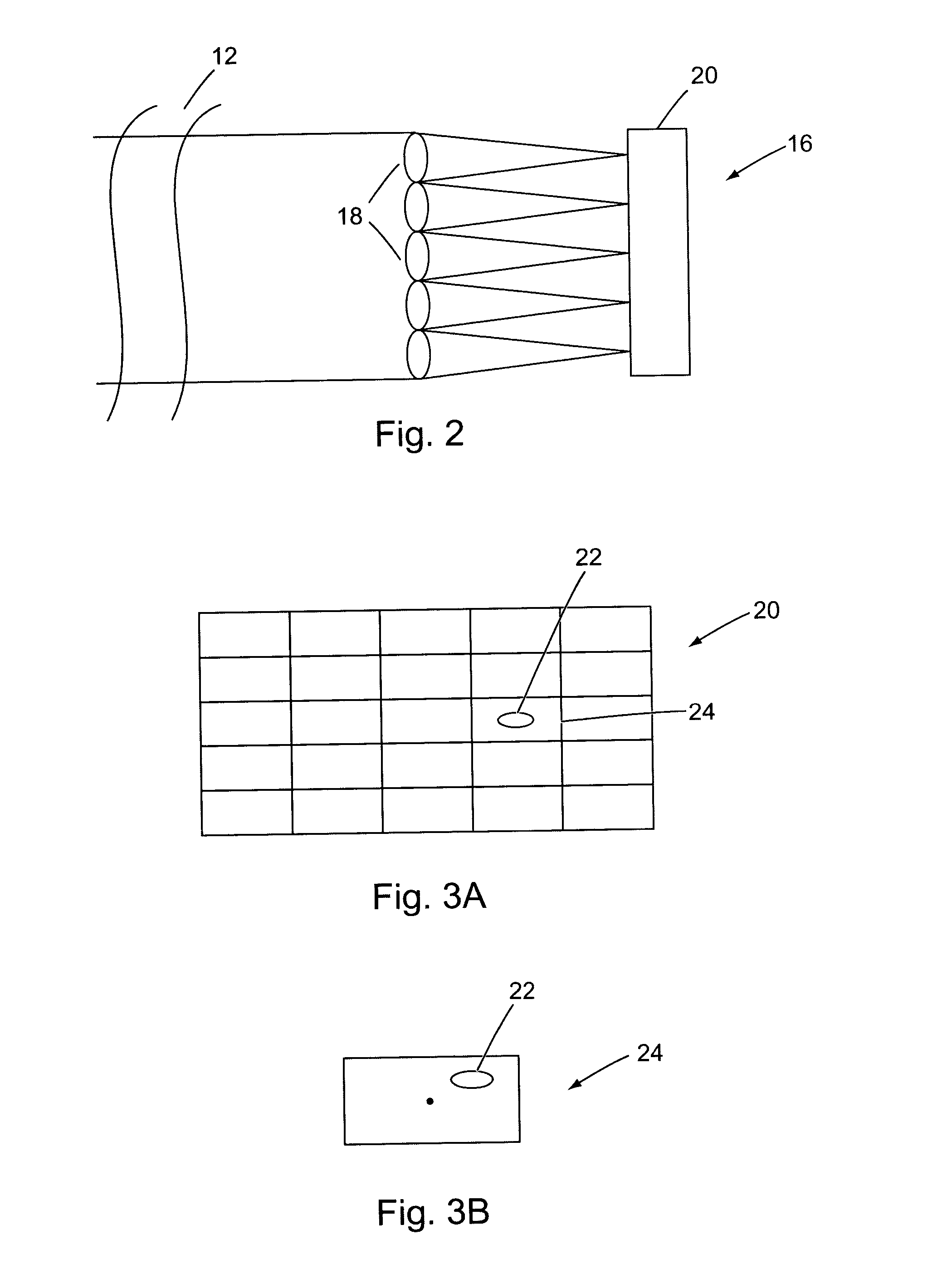Signal-to-noise ratio tuned adaptive optics control system
- Summary
- Abstract
- Description
- Claims
- Application Information
AI Technical Summary
Benefits of technology
Problems solved by technology
Method used
Image
Examples
Embodiment Construction
An adaptive optics control system 10 for correcting distortions in a wavefront 12 in accordance with one embodiment of the present invention is shown in FIG. 1. While the system will be discussed in connection with a telescope 14 for space observations, it can be appreciated that it can be used with any device and in connection with any medium involving optical wavefronts which are subject to distortion. The system 10 is a closed loop system consisting generally of a wavefront slope sensor 16, a wavefront reconstructor 26, a wavefront control system 27 and a wavefront corrector 28.
While the wavefront corrector will be discussed in connection with a deformable mirror, it can be appreciated that any spatial light modulator may be used and the term deformable mirror as used herein applies to both. As shown in FIG. 4, the deformable mirror 28 comprises a thin reflective surface 30 controlled by a plurality of actuators 32 secured to the back thereof. In a preferred embodiment, the ac...
PUM
 Login to View More
Login to View More Abstract
Description
Claims
Application Information
 Login to View More
Login to View More - R&D
- Intellectual Property
- Life Sciences
- Materials
- Tech Scout
- Unparalleled Data Quality
- Higher Quality Content
- 60% Fewer Hallucinations
Browse by: Latest US Patents, China's latest patents, Technical Efficacy Thesaurus, Application Domain, Technology Topic, Popular Technical Reports.
© 2025 PatSnap. All rights reserved.Legal|Privacy policy|Modern Slavery Act Transparency Statement|Sitemap|About US| Contact US: help@patsnap.com



